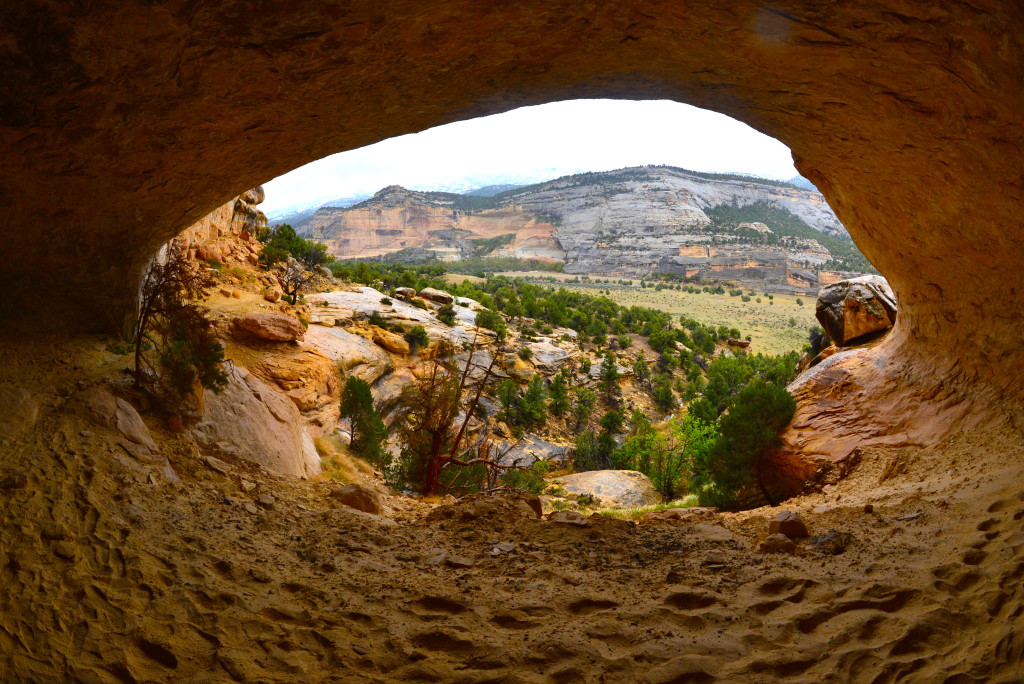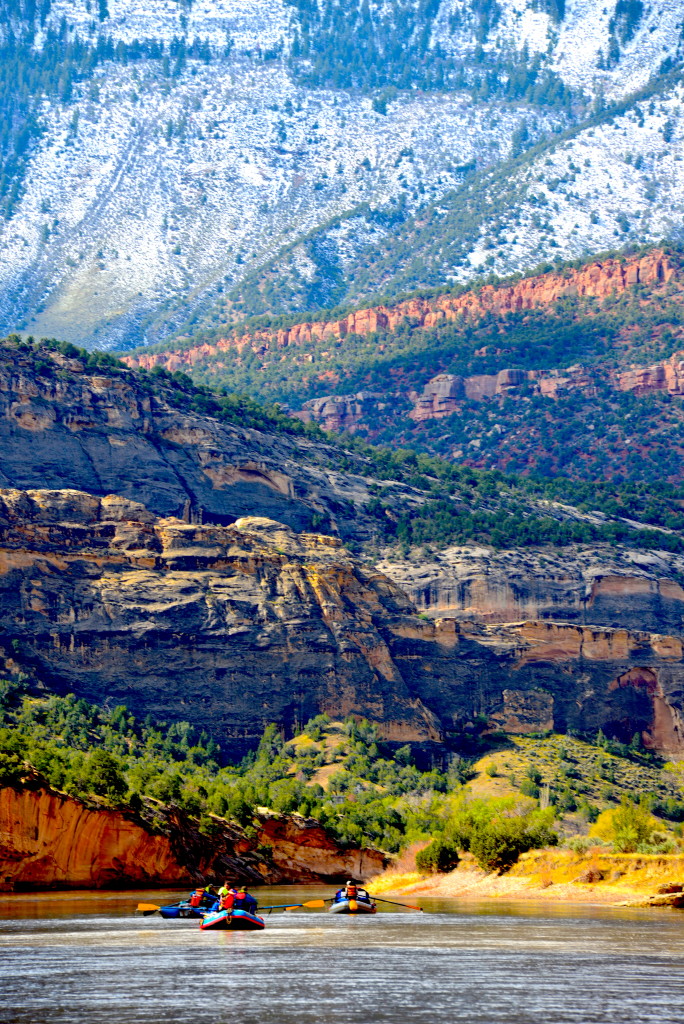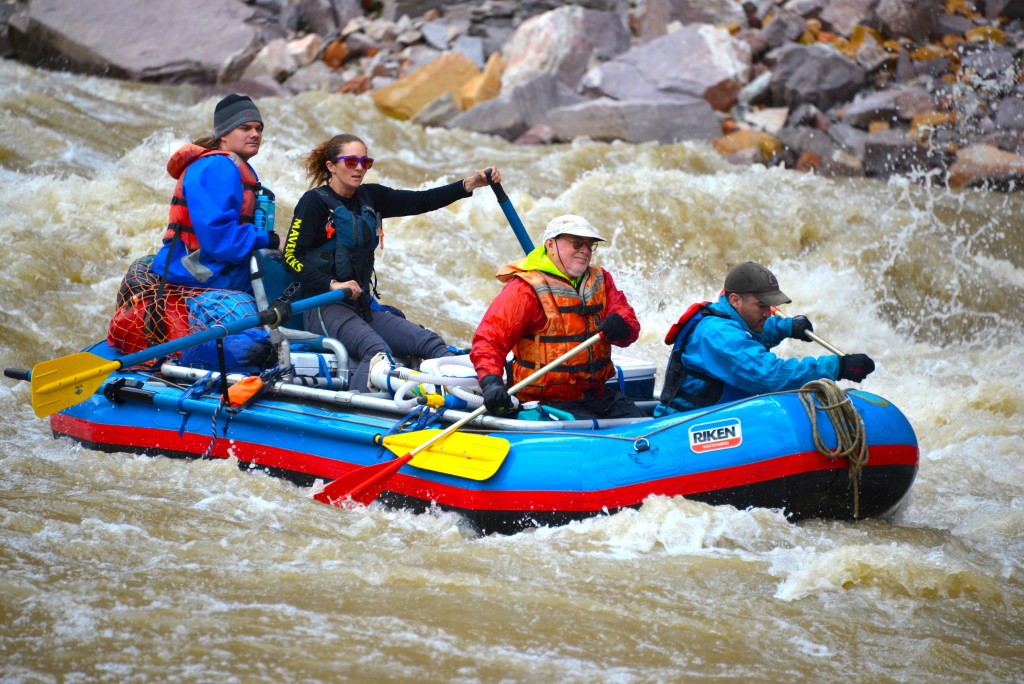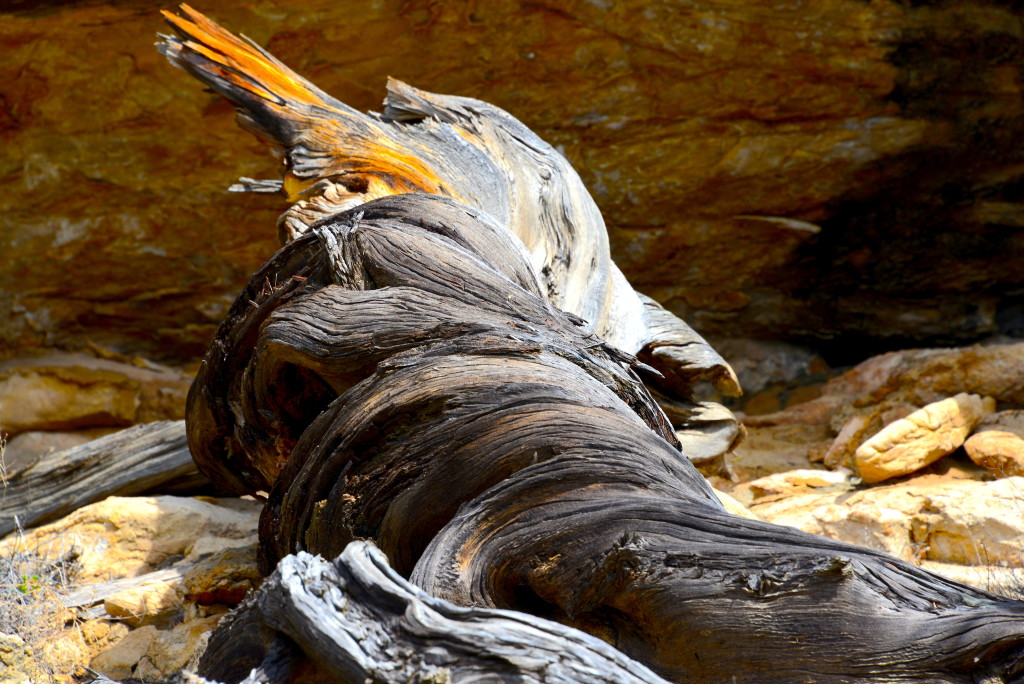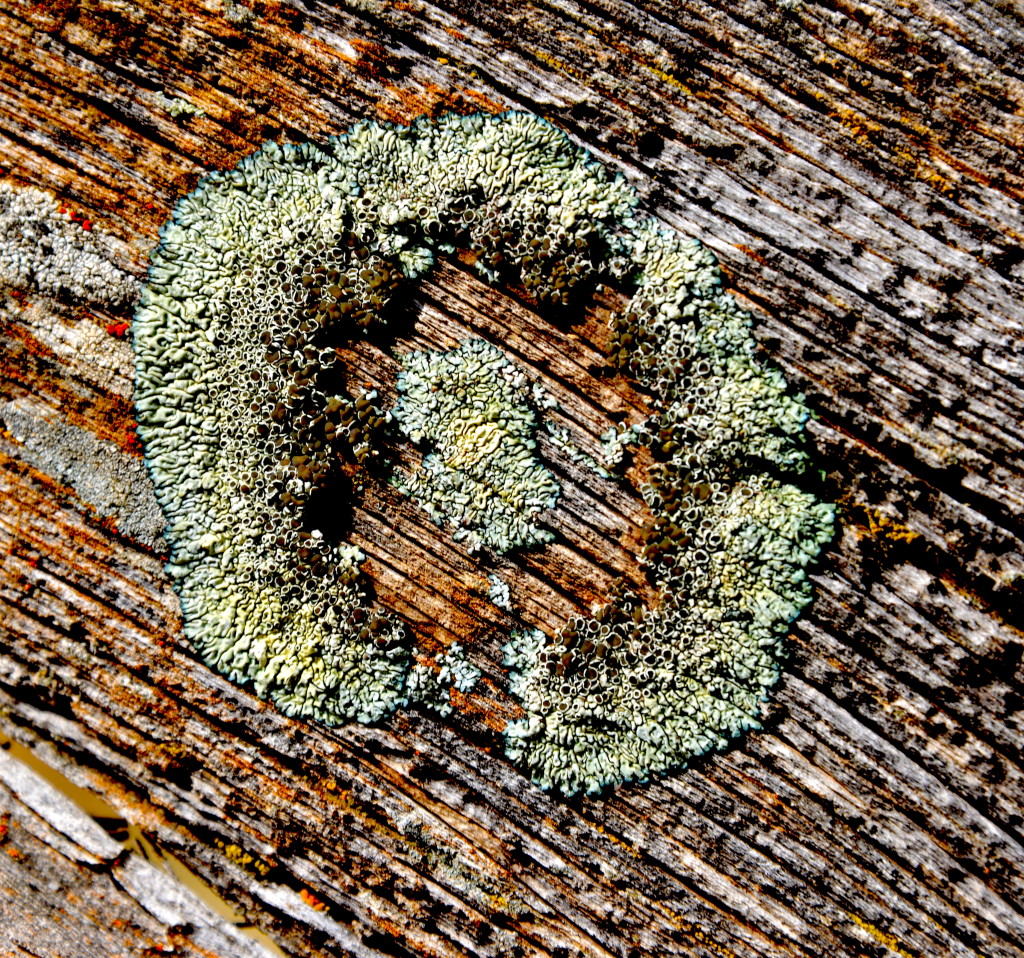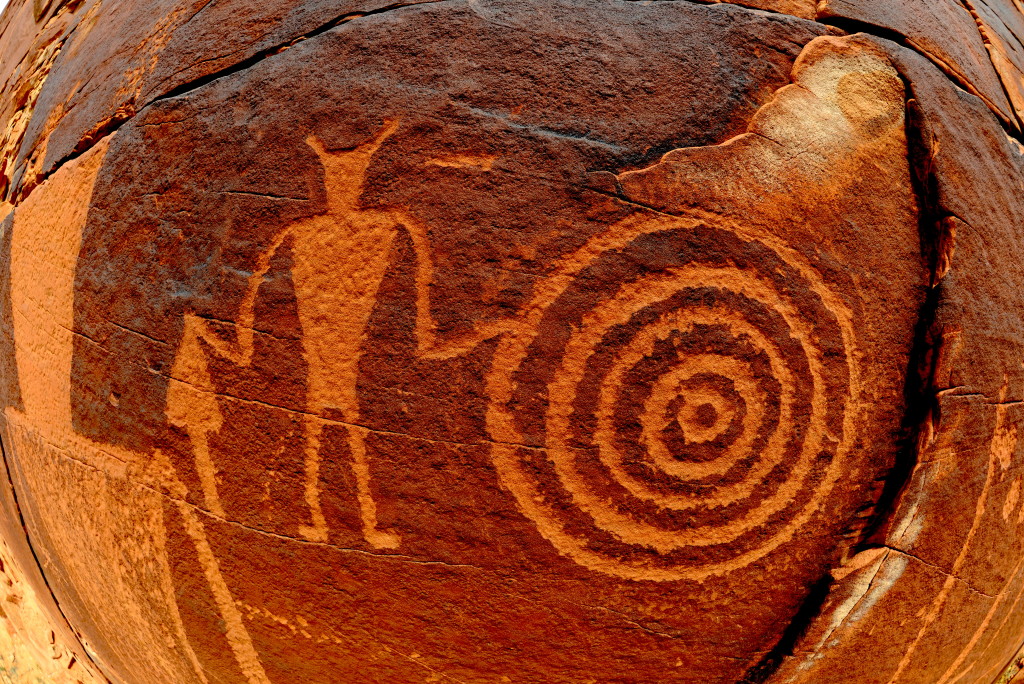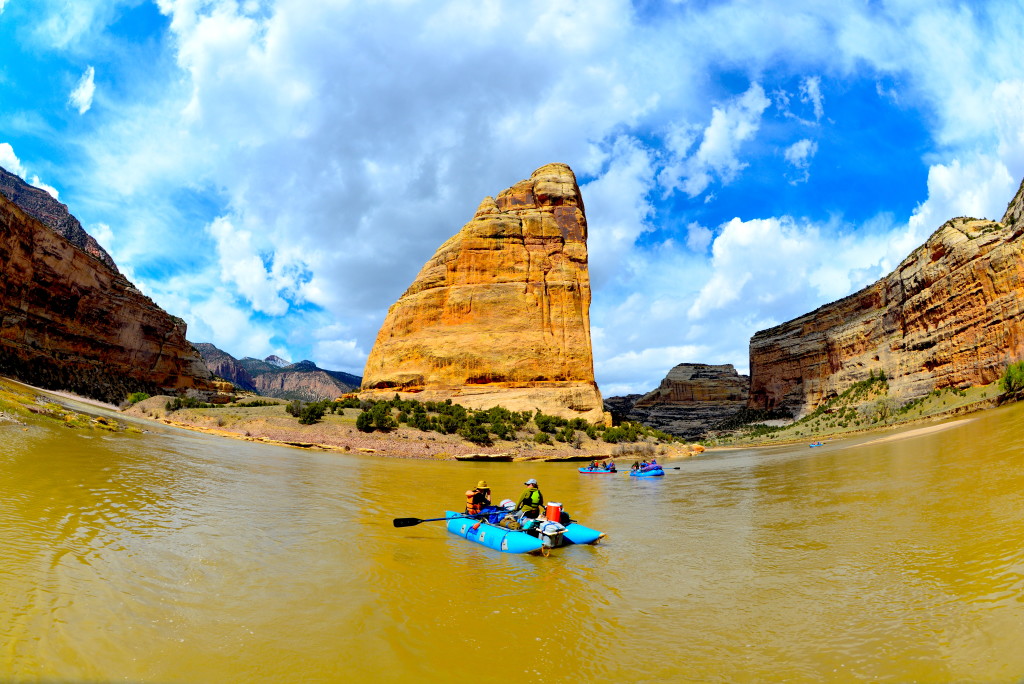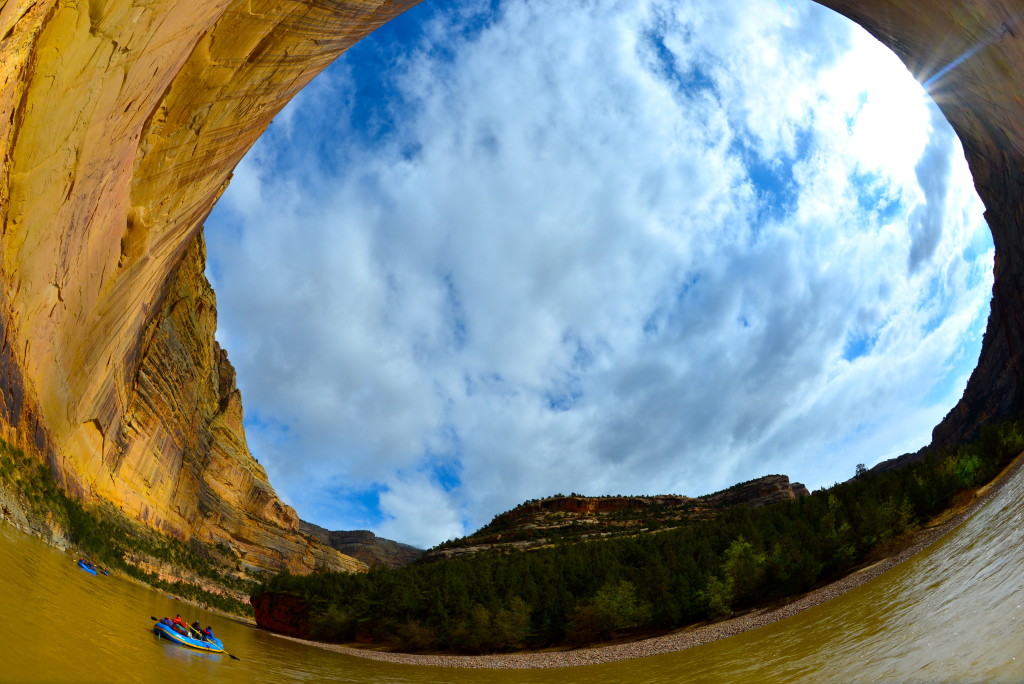The Yampa River, Colorado’s free flowing gem.
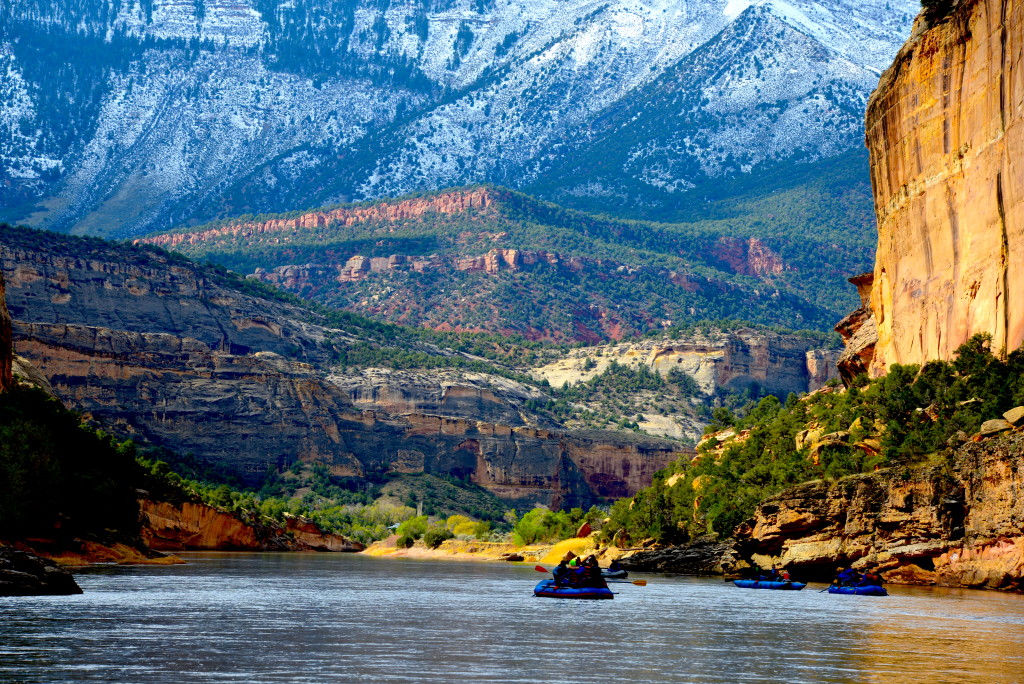
Rain, snow and wind flashed red across the small screen of my iPhone. The weather report looked bleak but you can’t let a little thing like weather keep you from exploring one of the prized rivers of the west. The last major free-flowing river in Colorado, the Yampa River forges 250 miles from the Flat Tops of Colorado to the Green River confluence deep inside Dinosaur National Monument. With fun and playful class II and III rapids around Steamboat, the class IV and V rapids of Cross Mountain Gorge, and the incredible Yampa Canyon, the Yampa River offers world-class adventure opportunities for everyone.
To float the Yampa, you need a permit. But getting a permit can be quite difficult. So you can either go with a river rafting company or apply for the permit yourself. It requires getting a group of your best boating buddies together and entering a lottery. Some 5000 people apply for just 300 launches each year. If you’re lucky, someone from your group will score a coveted spot. With only one launch a day, the river permit system ensures a true wilderness experience. So naturally when John Whipple, the Outdoor Leadership director from Colorado Northwest Community College (CNCC) in Rangely, called me up wanting to share his permit, I jumped on the opportunity. There is nothing like a river trip to build camaraderie. So on a cold spring day in April, a group of Colorado Mesa University students and staff joined forces with CNCC students and staff, for a fun filled four-day adventure. Sharing expenses, knowledge and gear, our groups melded effortlessly into one harmonious group.
I first learned about the Yampa River in an Environmental History and Geography course at Portland State University taught by Barbara Brower, the daughter of David Brower, an accomplished mountaineer and legendary environmental activist. One cannot take an environmental course and not learn about Echo Park. At this juncture, where the Yampa and Green Rivers converge, the modern American environmental movement began. During the 1930s and 1940s, dams were being constructed across the country, including in National Park lands. With the proposed construction of a dam at Echo Park, the Yampa and Green Rivers would flood these two amazing river corridors inside Dinosaur National Monument. In 1956 congress vetoed the project, succumbing to Brower’s efforts and public uproar, setting precedence for protecting rivers inside National Park lands. This landmark victory for conservationist set the stage for the Wilderness Act and the National Wild and Scenic River Act.
When the explorer John Wesley Powell floated through Echo Park in 1869, he dubbed the area Echo Park due to the incredible acoustics that reverberate from the canyon walls. Today, you can float past Steamboat Rock at Echo Park and enjoy the towering sandstone cliffs carved by millions of years of erosion. But before you reach this point, you must float through the breathtaking Yampa River Canyon. Starting at the Deerlodge put-in, the Yampa meanders for a mile and abruptly enters a spectacular box canyon that continues for 46 miles to Echo Park. Every bend reveals yet another 1000 foot tall cliff, such as the Grand Overhang, jetting directly over the river. Other walls are decorated with desert varnish streaks, as if giants had painted the walls with enormous paintbrushes.
A steady gradient gives birth to numerous rapids, including the raft flipping Warm Springs rapid, which at high flows has a reputation of sending seasoned rafters scurrying for their flip lines. Other rapids present easier read-and-run class II and III hits, giving this section of river a perfect combination of splashy fun with awesome scenery. Most rafters spend 4 to 5 days floating through the Yampa Canyon; giving ample time for camping and exploring the many side hikes with ancient petroglyphs and pictographs from the Fremont Era. There are numerous designated campsites that are amongst the best I have seen on any river corridor. Mather’s Hole campsite with its overhanging cliff provided the perfect shelter from rain and snow. A much-needed delight after 2 days of freezing temperatures, snow, wind and rain. Other camps delighted as well, with clear running steams, large sandy beaches, lush cottonwood groves, towering ponderosas pines and of course, epic groover locations.
As we rafted though this pristine wilderness, we contemplated the early explorers floating and exploring this wild river. With wooden boats and no modern equipment, these waters must have seemed daunting. After WWII, an abundance of cheap army surplus rafts and river guides allowed more people to finally start seeing these amazing canyons. Today, state of art hypalon self-bailing rafts ply these waters with no problem, bouncing off rocks and logs with little effort, allowing thousands of people to float along the Yampa River. There is little doubt once you see the majesty of the Yampa River, the thought of turning it into a reservoir vanishes pretty quickly. Each spring, snow melt swells the Yampa into a powerful force of nature, scouring the river banks, turning the water a milky brown, and bringing much needed sediment into the lower canyons. This natural cycle forms the foundation for a rich ecosystem, supporting valuable habitat for endangered species like the humpback chub and pikeminnow, both Colorado native fish. The Yampa’s free flowing nature stands in stark contrast to the controlled and crystal clear rivers of the Green River.
As we enter Echo Park, the silt-laden Yampa joins the cold clear Green, forming a perfect line between each river. You can even put your hand in the river and feel the water temperature differences. The cold water coming from the bottom of the Flaming Gorge reservoir mixes with more tepid waters of the Yampa. The line holds strong but eventually gives way, mixing into a greenish milky hue. In this mystical location, Echo Park seems to presents a perfect metaphor for the precarious balance between nature and man’s needs. No doubt, dams have shaped our modern way of living, providing jobs, irrigation water for farming, and hydropower for electricity. But in the same manner, free-flowing rivers provide an equally powerful need for humanity, feeding the soul and allowing us to witness nature in the raw.
Today, less than 13,000 river miles have wild and scenic status, while more than 75,000 large dams have altered some 600,000 river miles. It seems a balance must be reached. The Yampa is currently considered one of the top 10 endangered rivers by American Rivers and is still threatened by dams. Recently, diversions and dams have been proposed on the upper stretches of the Yampa. Water would be diverted to the Front Range for agriculture and municipal purposes, and on the Western Slope, water is needed for oil-shale development.
After four days of floating, our group pulls onto the shore at Split Mountain take out. I see the smiling faces of first time river runners. I can hear the conversations about the grandness of the canyon. Each person has been transformed in some special way. Unconsciously or consciously, floating a free-flowing river can imbue a certain mystical and spiritual stamp on the soul. The Yampa can provide the kind of “Awe” moment that can change the course of your life forever. And this is worth preserving.

